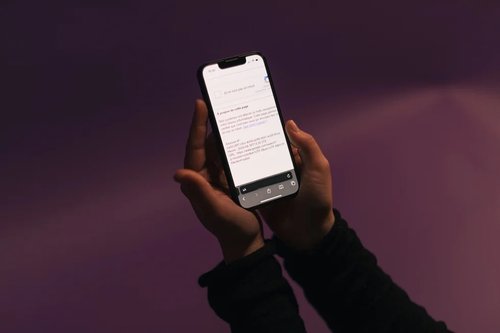Time management: ‘I tested the Pomodoro technique’
Oct 26, 2021
6 mins


Journaliste et responsable de la rubrique Decision Makers @ Welcome to the Jungle
Is the Pomodoro technique, a time management method devised by Francesco Cirillo, the perfect ingredient for organizing your schedule? We tested it and here’s what we thought.
Even if you’re not an expert in organizational skills, you’ve probably heard of the Pomodoro technique. I first came upon it, and other time-management tools with odd names, when I set up my company in 2017. For those of you who have a little Italian, the name “Pomodoro” might make you smile: “pomodoro” literally means “tomato”. But there are no MasterChef recipes here: we’re talking about a serious time-management technique developed by the consultant Francesco Cirillo at the end of the 1980s.
How does it work? You use a timer –– a tomato-shaped one for the purists –– to schedule 25-minute work periods, each dedicated to its own task, followed by a short break. The idea is that taking a little rest repeatedly is supposed to boost your concentration, intellectual agility and memory. I say “supposed to” because at this point, I’m still a bit skeptical. This kind of solution, offered up as a miracle fix for the umpteenth time by some influencer coach, always makes me laugh. Or scares me. But if you are to believe Cirillo, the Pomodoro technique has changed two million lives already. I decided to put aside my preconceived notions and take out my timer.
Pomodoro: the art of cutting your work into slices
“Why do I want to better manage my time?” That’s the question you should ask yourself before starting. That will help you to determine your goals with the Pomodoro technique, as explained on Cirillo’s website. In my case, beyond writing this article, I’d like to dissect my organizational reflexes. Are they any good? Do I get tired unnecessarily? How can I disconnect when everything else is urging me to keep my eyes fixed on my screen while working remotely? And then, can I optimize my schedule all while managing to stay creative.
Once past this introspective phase, I take up the required materials, which everyone has at home: a piece of paper, a pencil and a timer. For the last one, you can use the one in your kitchen, download an app or use your smartphone. There are then six steps to follow:
Whether it’s trivial or urgent, choose a task you’d like to accomplish.
Set the timer and make a deal with yourself: “I’m going to spend 25 minutes on this task and I won’t be interrupted.”
Work on the task until the timer rings. If you suddenly think of another task to work on, write it down on your sheet of paper as a reminder. Taking notes is a good way to lighten the load on your mind and relieve stress.
When you hear that rrrring, stop. Did you finish the task? Bravo, you can cross it off the list. If you didn’t finish, you can do it in your next Pomodoro slice.
Now is when you take a five- to 10-minute break. Try meditation or stretching. Have a coffee. Take a real break, something removed from your professional worries.
After every four Pomodoros, take a longer break of 20 or 30 minutes. This is ideal to give your brain time to assimilate new information and rest before the next series.
The test: Five days of the Pomodoro technique, morning, noon and night
I start the test on a Monday morning working from home in my small apartment. The air of calm lends itself to this. I grab a sheet of paper and a pencil, and I write down the day’s tasks in order of priority.
Pomodoro #1. I turn on my fan and set the timer on my smartphone for 25 minutes. On your marks, get set, go. My task: finalize the layout of an article before publication. It seems doable in the time allotted. I finish it! The whole time, however, my focus keeps wavering, drawn by my Slack notifications and the 20 or so tabs open in my web browser. Worse, I’m fully aware of my tendency to multitask. It’s not that I wasn’t aware of it, but I was in denial. Setting a timer has made me aware of my habits and of my digital environment: disruptive. I understand the visual and mental fatigue, the anxiety, the feeling of not being able to let go of my worries about work, which then bleed into my personal life, often when I’m really busy. Too often.
The timer rings. I tick that first task off the list and take a little break. I boil the kettle and make some jasmine tea, with a disco playlist in the background. Then I’m off again. I feel like I’ve boosted my motivation.
Pomodoro #2. I start to proofread a freelancer’s article. The work is short, easy and well-written. This time, I’m able to focus well. However, reading the text and making the initial corrections causes me to go five minutes over the time limit. What would it have been like with a more complex article, one littered with mistakes and with double the word count? I’ll go easy on myself. After all, I’m only a few minutes off. I can show a little bit of flexibility as long as my concentration is still good.
For my next break, I stretch, I take a trip to the bathroom and then drink a large glass of water. And so it goes. I make it to the end of four Pomodoros, after which I use my 30-minute break to go to the local supermarket. Then I do it all over again. I follow the technique every day while working remotely and in-person until I have been doing it for a week. I apply the technique as best I can, though there are quite a few hiccups. Against all expectations, my “discipline” has come back quite quickly. After just 48 hours, my pace seems different, more controlled. After five days? Well, I wouldn’t go so far as to call it a radical change –– I’ll leave the scientific observations to the researchers –– but I did have some interesting takeaways from the experience.
‘It’s not easy to reconcile Pomodoro with endless video calls’
Before I did this little experiment, I organized my day instinctively. I’m lucky that I can visualize my time well: I’m able to keep all my deadlines in mind (this is one of the few times where my memory is actually good). I’m also obsessed with Google Calendar, which I use for its scheduling functions, but also its reminders and to-do lists. I can adapt to my surroundings and my energy level. I prefer to take on tasks that need a lot of focus –– such as writing an article –– in the calm of my home after a good night’s sleep, rather than in an open-plan office after a lunch break.
That’s one of the limits of the Pomodoro technique: its lack of flexibility. In my opinion, this method is not suitable for all roles and contexts. For example, when I’ve managed to build my bubble and find inspiration to write an article, I don’t want to break that momentum. It would take too much energy to try to recreate those conditions many times a day. On top of that, there are tasks that are difficult to divide into 25-minute slots. I wonder how a manager could use this way of working. For some people, such as those who struggled with exams at school, setting a time limit might hinder their productivity. It’s not easy to reconcile the Pomodoro technique with endless video calls either. Though meetings could be improved if businesses adopted this short and efficient format: one meeting = one project = 25 minutes.
I found other positive aspects to the technique. Firstly, I took a step back to look at my time management and all its flaws. This is one of the goals of the Pomodoro technique: that users will take a look at their own work patterns and then improve them. The days also seem to go by more quickly. Taking regular breaks freed up space, both to feel satisfied about the task achieved and for some oh so precious rest, which modern society tends to undervalue. It also meant that I moved around more –– we all know the risks of a sedentary lifestyle on our health –– and reintroduced the notion of disconnecting from work into my vocabulary. The result is increased productivity. Pausing to breathe is not a waste of time. It is quite the opposite: a way to improve the quality of your work without exhausting yourself. Finally, the Pomodoro technique is a good way to quantify tasks. This can help you to anticipate your workflow and to work better with your colleagues: you can set realistic deadlines and share them with confidence. Now that’s a truly virtuous circle for team projects. In the end, as with any professional coaching method, it’s not about following it to the letter, but about learning about yourself, picking out tips that work for you, and coming up with your own recipe… with or without tomatoes.
Translated by: Kalin Linsberg
Photo by Welcome to the Jungle
Follow Welcome to the Jungle on Facebook on LinkedIn and on Instagram and subscribe to our newsletter to get our latest articles every day!

More inspiration: Productivity & tools

Goal setting: How to bounce back when you feel like a failure
The big F word ... Failure. We all face it, but here’s how to make it your secret weapon for success.
Dec 18, 2024

Productivity boost: Why mental health outshines long hours
Long hours don’t equal better work. Discover how mental health support can unlock productivity and time efficiency in the workplace.
Nov 28, 2024

10 fun ways people are using AI at work
While many use AI for basic tasks like grammar checks or voice assistants, others are finding innovative ways to spice up their work days.
Nov 05, 2024

12 Slack habits that drive us crazy
Slack is a top messaging platform, but coworkers can misuse it. Over-tagging and endless messages can make it frustrating ...
Oct 16, 2024

10 CareerTok creators you should be following
Looking for career advice? CareerTok has quick tips from real experts on interviews and job offers.
Sep 25, 2024
The newsletter that does the job
Want to keep up with the latest articles? Twice a week you can receive stories, jobs, and tips in your inbox.

Looking for your next job?
Over 200,000 people have found a job with Welcome to the Jungle.
Explore jobs